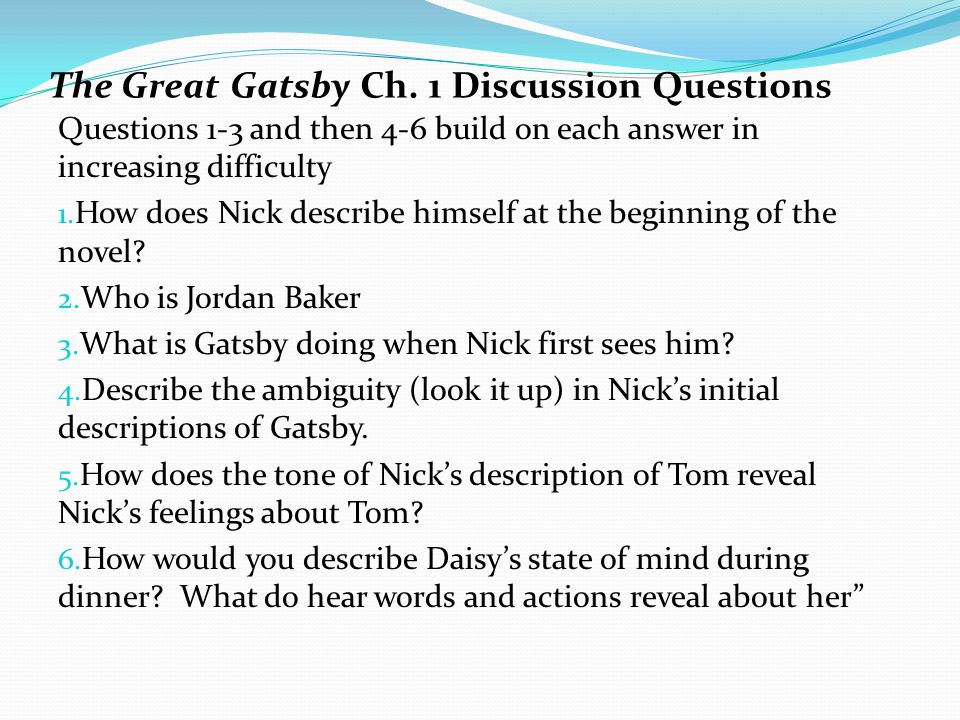
Hyperbolic descriptions of her focus on her voice, which Carraway describes as "bringing out a meaning in each word that it had never had before and would never have again." She is Gatsby's "grail" that he fails to possess. Hyperbole and Daisy Buchannanĭaisy Buchanan represents the unattainable woman as well as the failed American Dream. he must be about His Father's Business, the service of a vast, vulgar and meretricious beauty." Gatsby did not literally transform, but Carraway describes him in this way to bring attention to his struggle to change. sprang from his Platonic conception of himself. there was something gorgeous about him, some heightened sensitivity to the promises of life, as if he were related to one of those intricate machines that register earthquakes ten thousand miles away," Fitzgerald uses hyperbole to exaggerate how sensitive and self-conscious Gatsby appears to be, which leads Nick to suspect that Gatsby is not what he seems.įurther examples reinforce the theme of reinvention: "Jay Gatsby.

For Nick Carraway, a character who is also the narrator in the novel, Jay Gatsby "represented everything for which an unaffected scorn. Many of the descriptions of characters contain hyperbole. suggest how dependent the sense of an outer world is on the way it is viewed by others." Critic Sophie Bertrand notes that the decrepit state of the eyes also suggests the decay of the American dream, since the seemingly living eyes look out over a desolate waste. "The Cambridge Companion to American Novelists" notes that "the brooding eyes of Dr. The fake eyes spy on the characters, reinforcing the idea that the characters create their identities to impress others.

brood on over the solemn dumping ground." The eyes are described as human eyes would be, exchanging looks with characters and witnessing scenes "with peculiar intensity." Significance

They look out of no face, but, instead, from a pair of enormous yellow spectacles which pass over a nonexistent nose. are blue and gigantic - their retinas are one yard high. The most famous instance of personification in the novel is an advertisement that overlooks ash-heaps: "above the grey land and the spasms of bleak dust.


 0 kommentar(er)
0 kommentar(er)
